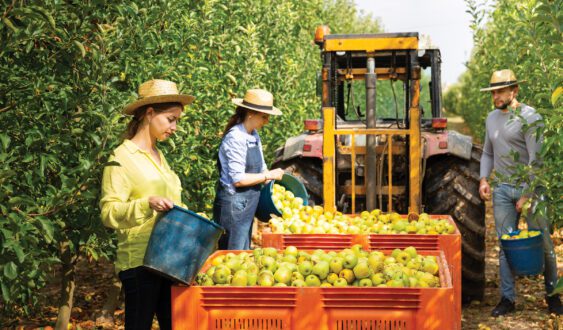Mar 13, 2023Be prepared for the inevitable H-2A labor audit
In the waning days of the lame-duck session of Congress, there was still hope in some corners of the fruit and vegetable industry that legislators would include immigration and ag labor in the omnibus bill.
It was the only way the U.S. House of Representatives’ Farm Workplace Modernization Act, passed in 2019 and 2021, and the Senate’s Affordable and Secure Food Act, introduced on Dec. 15, would move forward.
They did not, and H-2A reforms that would have temporarily frozen the Adverse Effect Wage Rates, which determine hourly wages in each state for H-2A workers, didn’t take place. On Jan. 1, hourly wages for the program rose 15.5% in Florida, 14% in Alabama, Georgia and South Carolina, and 13% in Minnesota, Wisconsin and Michigan. H-2A wages in other states rose, to lesser degrees.


Marsh kicked off the session’s labor discussion. Fred Leitz, a Sodus, Michigan-area tomato grower who has had several roles at the NCAE, including chairman, asked attendees in the room at DeVos Place to do what he’s asked of them many times: contact their legislators.
“They want to hear our stories … Michael (Marsh) can’t do it all, USApple can’t do it all, Michigan Apple (Committee) can’t do it all,” said Leitz, who said he’s participated in about 30 “fly-ins” to Washington, D.C. in the past 20 years, all designed to promote immigration and H-2A reform with direct meeting with legislators and their staff.
Michael Lalich, president of Low Country Labor Co. LLC, said employers who use the H-2A program should be prepared for the inevitable Department of Labor Wage and Hour Division: Even if they’ve never been audited before using H-2A employees, Lalich said it’s inevitable that an audit will happen in the program. The Department of Labor is returning to pre-COVID on-site inspections, although paper audits will still be conducted by the Office of Foreign Labor Certification.
Lalich shared tips on how to prepare and plan for an H-2A audit.
Choose someone who will be the “point person” for the company to accompany the investigator – “On the farm, there’s a bunch of different roles, from supervisors, farm managers, accountants, whatever it may be,” Lalich said. “Everybody needs to know their role when Wage and Hour arrives.” Experts from each area, from field labor to packinghouse operation, should participate when their area is addressed, but the point person needs to be the direct communicator.


That person should have the “best temperament” — “We want to treat all of the investigators with dignity, with respect, despite them coming in the middle of your packing season, despite 2,000 orders that come up that day.” A confrontational point person will only “change the demeanor of the investigator” in a similar manner, he said.
Choose a secondary observer to participate in the audit – This person should observe and take notes on what information was offered, what documents were requested, what questions were unanswered; basically documented what happened and needs to be followed up on.
Don’t know the answer to a question? Don’t answer it – “If you’re unsure of a question, say ‘I’m not positive, give me 48 hours,’ whatever it takes for you to get the true answer if you do not know.” Those being audited have 72 hours to answer these questions.
A lack of records will be your enemy – “When you do find the answer, you need to find the answer with proof. Having records is really, really crucial.” Documentation starts from Day 1, with the onboarding process, Lalich said, when you need to note how much workers are reimbursed for food, transportation and other expenses incurred in arriving at the farm.
Provide a translator if necessary – From Day 1, employees will be signing documents, and employees must demonstrate that workers knew what they were signing.
Choose farm labor contractors (FLCs) wisely – FLCs can take over key areas of your employment and documentation, but make sure to fully vet them. Lalich said to talk to other growers in the area about their experience with specific FLCs. Contracting with an outside company doesn’t remove liability.
First impressions go a long way – Auditors and employers tend to have a better experience if the offices and other areas of the business are organized and tidy. “In my opinion, when you show up at somebody’s office and it looks like a disaster, and when you go to the next office and they are tidy and ready to go, you will probably have more confidence” in the tidy office, he said.
Brad Lapchak, an investigator with the Grand Rapids office of the Department of Labor, said auditors have the power to “debar” employers from the H-2A program, but the end goal is compliance, which is admittedly more complicated in achieving than outside of the H-2A program. H-2A employers have about two dozen requirements to meet, from proving they were unable to hire U.S. residents for the jobs, to providing proper housing.
— Chris Koger, managing editor














